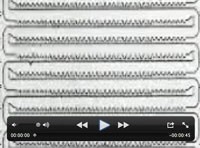Advertisement
Grab your lab coat. Let's get started
Welcome!
Welcome!
Create an account below to get 6 C&EN articles per month, receive newsletters and more - all free.
It seems this is your first time logging in online. Please enter the following information to continue.
As an ACS member you automatically get access to this site. All we need is few more details to create your reading experience.
Not you? Sign in with a different account.
Not you? Sign in with a different account.
ERROR 1
ERROR 1
ERROR 2
ERROR 2
ERROR 2
ERROR 2
ERROR 2
Password and Confirm password must match.
If you have an ACS member number, please enter it here so we can link this account to your membership. (optional)
ERROR 2
ACS values your privacy. By submitting your information, you are gaining access to C&EN and subscribing to our weekly newsletter. We use the information you provide to make your reading experience better, and we will never sell your data to third party members.
Environment
Device puts cells in the flow
August 14, 2006
| A version of this story appeared in
Volume 84, Issue 33
Studying how chemicals affect cells requires precise control of the doses they receive. A new device designed by graduate student Rex Nielson and chemistry professor Jason B. Shear at the University of Texas, Austin, allows them to dose multiple cellular targets in parallel (Anal. Chem., DOI: 10.1021/ac061084i). Their method relies on a simple microfluidic device that consists of a pair of stacked flow chambers, one holding the cell culture and the other serving as a reagent flow cell. The cultured cells are grown on a membrane that is inserted as a barrier between the two chambers. With a pulsed laser, Nielson and Shear drill micrometer-scale holes in the membrane, allowing plumes of reagent to flow from the reagent chamber into the cell-culture chamber and wash over the selected cells or subcellular regions. The reagent streams can be turned off by plugging the holes with photo-cross-linked proteins. Shear and Nielson are starting to use the device to study how multiple neurons in a network respond to chemical stimulation.



Join the conversation
Contact the reporter
Submit a Letter to the Editor for publication
Engage with us on Twitter